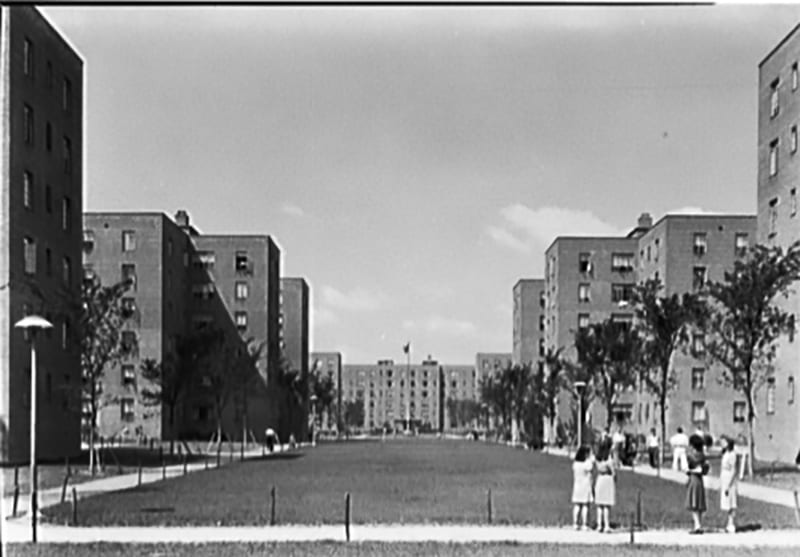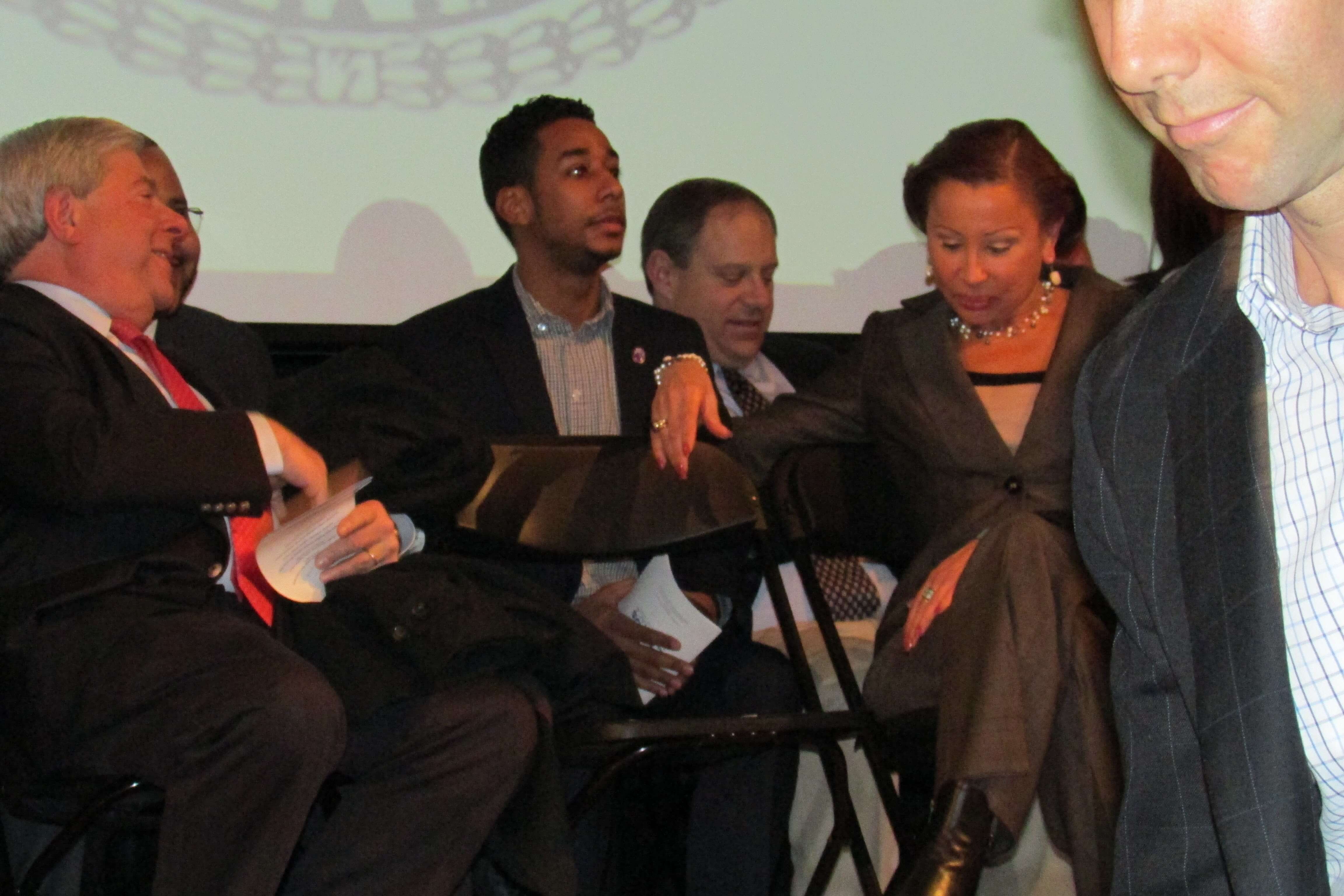On a rainy Saturday afternoon in October, about a dozen transportation enthusiasts assembled at NYU’s Tandon School of Engineering in Downtown Brooklyn, their predominantly male bodies warming the room and filling it with the scent of body odor. Each room had a different scheduled presentation or discussion topic as part of 2023 Transportation Camp—a conference for those passionate about transportation—and the attendees in this particular room had chosen to learn about the new Comprehensive Plan for Brooklyn. The plan was released earlier in the month and now Bryt Byrd, Planner for the Brooklyn Borough President’s Office, stood poised to share the plan and receive feedback. For the next forty minutes, he walked the room through the plan, but by the end of the presentation, there were just a few questions, largely about methodology.
The scarcity of questions about the plan itself underlied a few important points, the first of which is that a forty minute presentation could only provide the broadest overview of the 201-page Comprehensive Plan. Its 100+ maps, which visualize the plan’s data, alone would take hours to thoroughly dissect. Given that this is after all, a comprehensive plan, the length is forgivable, if not necessary. The plan was produced by the Office of Brooklyn Borough President Antonio Reynoso, in partnership with the Regional Plan Association, the New York Academy of Medicine, and Hester Street. Beyond insights from these collaborators or their engagement, the plan pulls its frameworks, goals, and objectives from various other plans and resources, serving more as a synthesized understanding of city and agency goals—from housing to sustainability—than as a new or unique vision for Brooklyn.

The plan received little criticism from the group of transit enthusiasts, as it promoted all the things that urbanists love best—pedestrianization, improved transit, and using data to make informed decisions. Using data to understand existing conditions throughout the borough, the plan very effectively weaves together its multiple objectives. For example, southern Brooklyn has fewer subways, higher automobile usage, and, in turn, more frequent and deadly collisions with pedestrians. Providing transit options to underserved communities in southern Brooklyn would likely decrease traffic deaths, while also potentially improving health outcomes as people use more active forms of transportation, and improve air quality.
Housing, one of the most critical topics for the city, is also one of the plan’s main focus areas. The plan first looks at many aspects of housing, from crowding, to rent prices, to housing construction in each neighborhood. It also connects housing to transportation and public health, repeatedly noting that safe, affordable, quality housing is a critical factor for public health. Of course, this insight isn’t especially novel, nor is the plan’s housing goal: to increase access to safe and healthy affordable housing across the borough. Nonetheless, sometimes important things do not need to be overly innovative. It is heartening to see the office list 12 recommendations to develop new affordable housing, in addition to recommendations for how to support transit-oriented development, and preserve and improve government-regulated housing.
Other goals included increasing access to quality, affordable health care and preventative services; reducing exposure to hazardous environmental conditions, including those exacerbated by climate change, that affect the most vulnerable Brooklynites; increasing and supporting local community-based organizations that focus on reducing health disparities in the borough; increasing access to employment opportunities and support pathways to well-paying jobs; and integrating planning for accessibility. Each of the plan’s seven goals is broken into multiple objectives, which each have recommendations for the Borough President’s Office to pursue.
South vs. North
Many of the specific trends highlighted in the plan focused around the needs of southern Brooklyn versus the high affluence of North Brooklyn, but there were a few findings related to Red Hook and Carroll Gardens that may be of particular interest to readers of this paper. For example, despite increasing or stagnant housing supply in most parts of Brooklyn, “neighborhoods such as Park Slope, Carroll Gardens, and Brooklyn Heights saw the largest declines in their housing supply, in some cases losing as many as over 100 units per census tract.” The plan also highlighted Red Hook’s dearth of primary care physicians, poor access to the subway, and increasing coastal flood risk. Among the recommendations for these problems were to ensure Brooklynites live within a half-mile of a quality health care facility using various tactics, strengthening Brooklyn’s bicycle, pedestrian, and bus networks based on the NYC Streets Plan and Vision Zero goals, and to identify opportunities for nature-based solutions for stormwater capture in the public realm to mitigate flooding.
Perhaps the weakest portion of the plan is its section entitled “Next Steps,” which wraps up the entire report in four short paragraphs, noting that the Borough President will use this document to guide projects moving forward and that it is a living document that can and will be revised and improved based on feedback and new data. In fact, the office welcomes Brooklynites to share feedback by emailing testimony@brooklynbp.nyc.gov. Although the feedback and openness are strengths of the plan, timelines or clear processes for how the Borough President’s Office will proactively work towards the report’s objectives are lacking.
In his introduction to the plan, Borough President Reynoso puts the need for the plan plainly: “Instead of doing what most large cities across the world do by creating a long-term comprehensive plan to guide our growth and development, in New York City, we zone. That’s it. We don’t plan, we just zone.” Though the content may not be groundbreaking, and any Borough President’s initiative is hard to review without wondering how much of it is just angling before their eventual bid for mayor, the comprehensive plan can also be seen as a dare to the rest of the boroughs and the city. Who else will step up and take initiative, connecting the dots on the laundry list of changes the city needs? For now, the transit nerds and I are just thankful to live in Brooklyn, where the Borough President recognizes that housing, health, transportation, and sustainability are overlapping issues in desperate need of attention.
LINKS: The Plan: https://www.brooklynbp.nyc.gov/the-comprehensive-plan-for-brooklyn/










